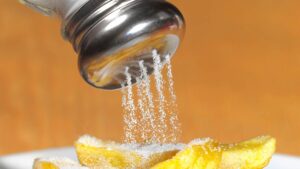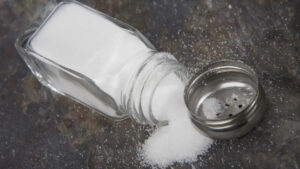BCI’s Pilbara potash project could deliver billions over 60 years

Pic: Tyler Stableford / Stone via Getty Images
New metrics for BCI Minerals’ (ASX:BCI) Mardie salt and potash project on the West Pilbara coast of Western Australia indicate the project can deliver billions worth of revenue over about six decades.
A definitive feasibility study envisages production of 4.4 million tonnes of high purity salt and 120,000 tonnes of premium sulphate of potash (SOP) fertiliser per annum for a total capital outlay of $779m.
Pricing for SOP — the fertiliser of choice for leafy, chloride-intolerant crops — has been remarkably steady over the past decade, tracking between $US450 ($688) and $US600 ($917) a tonne.
Mardie is expected to have a pre-tax net present value – an indicator of profitability – of just under $1.2bn and generate earnings before interest, taxes, depreciation, and amortisation of $197m per annum.
In total the project is tipped to deliver total revenue of $22bn and net cash flow of $10bn over 60 years.
BCI says talks with potential cornerstone equity investors are underway, while project funding initiatives such as the Australian government’s Northern Australian Infrastructure Facility are also well progressed.
The company has already signed 13 non-binding salt offtake memoranda of understandings (MoU) and two SOP MoUs with credible Asian buyers for all of its salt and 75 per cent of its SOP production.
Regulatory approvals and tenure applications are also well advanced.
BCI is expecting to make a final investment decision in the first quarter of 2021, begin construction in the following quarter and achieve first sales of salt by mid-2024 and SOP by mid-2025.
Meanwhile, Kalium Lakes (ASX:KLL) has delivered a maiden resource for its Ten Mile West deposit that could extend the life and/or increase production at its Ten Mile Lake potash operations.
The company says the resource of 5.95 million tonnes grading 17,490 milligrams per litre SOP represents the highest grade SOP resource in Australia.
Kalium added that its Ten Mile Lake trench operations had performed better than expected with 35 per cent higher grade and flow rates than predicted.
This has reduced the amount of brine that it needs to pump from the borefield.
Related Topics
UNLOCK INSIGHTS
Discover the untold stories of emerging ASX stocks.
Daily news and expert analysis, it's free to subscribe.
By proceeding, you confirm you understand that we handle personal information in accordance with our Privacy Policy.








